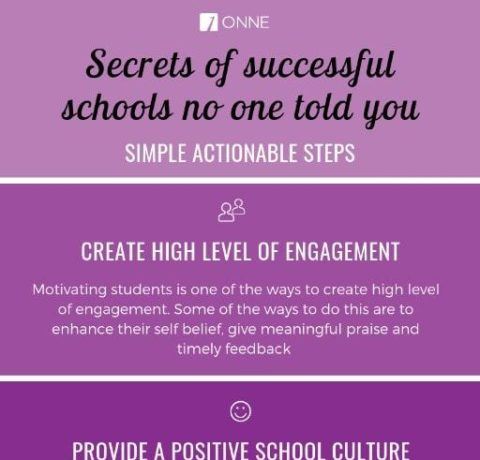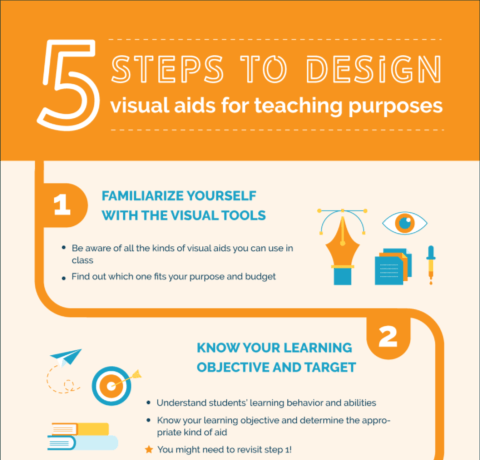Useful Books for Principals and Teachers Infographic
As educators work to maintain New Year’s resolutions, this resource will provide them with the support they need to improve their practice and promote academic success for their students. The Useful Books for Principals and Teachers Infographichelps educators determine which professional development publication meets their specific goals. Intended for teachers and principals, the infographic outlines the common challenges facing today’s educators and provides book recommendations as solutions. some of the goals listed in the infographic are achieving work/life balance, improving grading, motivating teachers, and improving school culture. This is perfect for the educator looking to improve their practice or find a new read.
New Principal Bundle
This set of four titles will help new principals work more effectively at every level. The set includes the following books:
Insights into Action: Successful School Leaders Share What Works by William Sterrett: Each chapter of Insights into Action carefully examines a particular topic of relevance, translating research and experience into replicable, sustainable practices and offering ways to overcome barriers to success.
Never Underestimate Your Teachers: Instructional Leadership for Excellence in Every Classroom by Robyn R. Jackson: With the help of this book you’ll learn how to meet your teachers where they are and help every one of them—from the raw novice to the savvy veteran, from the initiative-weary to the change-challenged to the already outstanding—develop the mind-set and habits of master teachers. Real-life examples, practical tools, and strategies for managing time and energy demands will help you build your leadership capacity as you raise the level of instructional excellence throughout your school.
The New Principal's Fieldbook: Strategies for Success by Pam Robbins and Harvey Alvy: Surprises, obstacles, and opportunities characterize the leadership path. Within the chapters, the authors use research and specific examples from recognized practitioners to create a road map for navigating the complex challenges of the principalship.
Qualities of Effective Principals by James H. Stronge, Holly B. Richard, and Nancy Catano: Throughout the book, the authors provide readers with helpful tools and extensive research that will help them to develop a blueprint for sustained school leadership, create an effective school climate for learning, select, support, and retain high-quality teachers and staff, assess instructional high quality, build a foundation for organizational management, create, maintain, and strengthen community relationships, make contributions to the professional educational community and define their critical role in student achievement.
Professional Development Books for Principals
The Tech-Savvy Administrator: How do I use technology to be a better school leader by Steven W. Anderson: In this book, award-winning blogger and educational technology expert Steven W. Anderson explains how and why leaders should use technology and outlines what should be in every leader’s digital tool kit.
Short on Time: How do I make time to lead and learn as a principal? by William Sterrett: School leadership expert and former principal William Sterrett comes to the rescue with practical advice on how principals can make the most of their time to achieve real success.
Never Underestimate Your Teachers: Instructional Leadership for Excellence in Every Classroom by Robyn R. Jackson: In this book for school leaders, Jackson presents a new model for understanding teaching as a combination of skill and will and explains the best ways to support individual teachers’ ongoing professional development.
Books on Addressing the School's Need
Effective Teacher Interviews: How do I hire good teachers? by Jennifer L. Hindman: In this book, Jennifer L. Hindman provides practical advice on how to conduct hiring interviews that reliably predict a teacher's success,
Closing the Attitude Gap: How to Fire Up Your Students to Strive for Success by Baruti Kafele: In this book, Baruti Kafele makes the case that the "attitude gap" that often affects underperforming students can only be closed if educators first help students develop the will to strive for excellence.
School Culture Rewired: How to Define, Assess, and Transform It by Steve Gruenert & Todd Whitaker: In this book, education experts Steve Gruenert and Todd Whitaker offer tools, strategies, and advice for defining, assessing, and ultimately transforming your school's culture into one that is positive, forward-looking, and actively working to enrich students’ lives.
100+ Ways to Recognize and Reward Your School Staff by Emily E. Houck: This book provides school administrators with practical, easy-to-use, and inexpensive ways to reward and recognize the efforts of their staff.
Read, Write, Lead: Breakthrough Strategies for Schoolwide Literacy Success by Regie Routman: Drawing on her experience as a mentor teacher, reading specialist, instructional coach, and staff developer, author Regie Routman offers time-tested advice on how to develop a schoolwide learning culture that leads to more effective reading and writing across the curriculum.
Helpful Guides for Teachers
When Teaching Gets Tough: Smart Ways to Reclaim Your Game by Allen N. Mendler: The book offers practical strategies you can use to make things better right away. Veteran educator Allen Mendler organizes the discussion around four core challenges: i. Managing difficult students. ii. Working with unappreciative and irritating adults. iii. Making the best of an imperfect environment. iv. Finding time to take top-notch care of yourself.
The Well-Balanced Teacher: How to Work Smarter and Stay Sane Inside the Classroom and Out by Mike Anderson: Teachers need to take care of themselves in five key areas to keep themselves in shape to care for their students. In addition to paying proper attention to their basic needs for nutrition, hydration, sleep, exercise, and emotional and spiritual refreshment, teachers also need to feel positive connections with other people, both in school and outside school, want to know that they make a positive difference through the work they do, enjoy their work, they have great energy and passion for their teaching, set boundaries and create routines so that they can have rich lives both in the classroom and at home.
Hanging In: Strategies for Teaching the Students Who Challenge Us Most by Jeffrey Benson: In this book, veteran educator Jeffrey Benson shows educators the value of tenacity and building connections when teaching the students who most need our help.
The Core Six: Essential Strategies for Achieving Excellence with the Common Core by Harvey F. Silver, R. Thomas Dewing, & Matthew J. Perini: Thanks to more than 40 years of research and hands-on classroom testing, the authors know the best strategies to increase student engagement and achievement and prepare students for college and career. Best of all, these strategies can be used across all grade levels and subject areas.
Books on Assessment Strategies and Techniques
Checking for Understanding: Formative Assessment Techniques for Your Classroom by Douglas Fisher & Nancy Frey: In this book, Douglas Fisher and Nancy Frey show how to increase students' understanding with the help of creative formative assessments. When used regularly, formative assessments enable every teacher to determine what students know and what they still need to learn.
Grading Smarter, Not Harder: Assessment Strategies That Motivate Kids and Help Them Learn by Myron Dueck: In this book, educator Myron Dueck reveals how many of the assessment policies that teachers adopt can actually prove detrimental to student motivation and achievement and shows how we can tailor policies to address what really matters: student understanding of content.
Technology in the Classroom Bundle
This bundle of four titles tackles issues related to using technology in the classroom, including integrating digital tablets, teaching students 21st century skills, addressing the "E" in STEM instruction, and using technology to improve teaching.
Titles in this bundle:
Engineering Essentials for STEM Instruction: How do I infuse real-world problem solving into science, technology, and math? by Pamela Truesdell: In this practical introduction to engineering for elementary through high school teachers, you'll learn how to create effective engineering-infused lessons that break down the barriers between science, math, and technology instruction.
Digital Learning Strategies: How do I assign and assess 21st century work? by Michael Fisher: Digital tools continue to be used primarily for the utilization of available resources rather than in the creation of something new. This publication explores what types of assignments are worth engaging online, how teachers and students can leverage global interactions to improve their work, and how teachers can assess digital projects and other work.
Teaching with Tablets: How do I integrate tablets with effective instruction? by Nancy Frey, Doug Fisher, Alex Gonzalez: With the help of this book you’ll learn how to ensure that tablets are integrated into high-quality instruction, including strategies for using tablets for modeling, guided instruction, collaborative learning, independent learning, and formative assessment.
Ensuring Effective Instruction: How Do I Improve Teaching Using Multiple Measures? by Vicki Phillips & Lynn Olson (The Bill & Melinda Gates Foundation): Teachers and administrators will learn how and why it’s critical to (1) measure effective teaching, (2) ensure high-quality data, and (3) invest in improvement.
Books on How to Improve Instruction
The Differentiated Classroom: Responding to the Needs of All Learners by Carol Ann Tomlinson: In this updated second edition of her best-selling classic work, Carol Ann Tomlinson offers these teachers a powerful and practical way to meet a challenge that is both very modern and completely timeless: how to divide their time, resources, and efforts to effectively instruct so many students of various backgrounds, readiness and skill levels, and interests.
Managing 21st Century Classrooms: How do I avoid ineffective classroom management practices? by Jane Bluestein: According to award-winning author and classroom management expert Jane Bluestein, it's long past time for our strategies to catch up to the kids we're teaching. In this book she identifies seven of the most prevalent classroom management misconceptions, discusses the tried-but-not-so-true practices that result from them, offers positive, research-based alternatives that take into account how students learn today.
Understanding by Design by Grant Wiggins and Jay McTighe: Combining provocative ideas, thoughtful analysis, and tested approaches, this new edition of Understanding by Design offers teacher-designers a clear path to the creation of curriculum that ensures better learning and a more stimulating experience for students and teachers alike.
Books on How to Reach Special Populations
Understanding How Young Children Learn: Bringing the Science of Child Development to the Classroom by Wendy Ostroff: The author shows you how to harness the power of the brain, the most powerful learning machine in the universe. She highlights the processes that inspire or propel learning—play, confidence, self-regulation, movement, mnemonic strategies, metacognition, articulation, and collaboration—and distills the research into a synthesis of the most important, takeaway ideas that teachers will need as they design their curriculum and pedagogy.
Classroom Instruction That Works with English Language Learners by Jane D. Hill and Kathleen M. Flynn: The strategies discussed in the book include homework and practice, summarization and note taking, and use of nonlinguistic representations, among many others. For each strategy, the authors provide a summary of the research, detailed examples of how to modify the strategy for use with ELLs in mainstream classrooms, and teacher accounts of implementation.
Teaching/Engaging With Poverty In Mind 2-Book Set byEric Jensen: This two-book set provides practical insights into the effects of poverty on learning and what strategies teachers can use to better engage students in the face of these difficulties.
Causes & Cures in the Classroom: Getting to the Root of Academic and Behavior Problems by Margaret Searle: This book reveals new neurological research about the root causes of these obstacles and lays out a comprehensive five-step protocol designed to help all educators identify and address common student academic and behavior issues.







You can adjust your cookie preferences here.